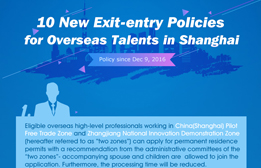6 Keys to Look for When Evaluating a Job Applicant's Resume
Here are the six tips to help you quickly scan through your initial resume stack and increase your odds of spotting your potential winners.
Imagine you've place an ad for a new hire. Into your inbox has flooded 50 or more applicants. What should you use to help you do your initial sorting to narrow your list down to a more manageable number?
Here are the 6 keys to follow to increase your odds of uncovering the best candidates as quickly as possible.
1. Scan for stability and growth in their job history. Once upon a time you'd look for candidates who had long tenures at each of their companies. Today, however, that has changed. While you don't need them to show a twenty year history with one company, and in fact you may hold that against them depending on the company as they would lack exposure to other businesses and markets, you do want to make sure they don't hop jobs every 6-12-18 months. Why? Because a new hire is an investment; you want them to stay with you long enough to get a solid return off your investment.
2. Scan for a clear record of achievement and learning in the specific area of your written needs. Have they done the things you need them to do? Have they done it in comparable environments and for companies that are comparable to yours? Ideally you will find candidates who have solved the challenges you need them to solve to get you to the next level.
3. WARNING: Beware being overly impressed by successes that won't translate to your company, market, or stage. Sure they might have scaled a $1 billion company to $10 billion in sales, but if you're a $1 million a year company how likely are their experiences going to transfer over. I'm much more interested in the hire that has taken a $5 million a year company to $25 million--her experiences will much more easily transfer over to your situation.
4. Scan for cultural fit. Is this person obviously not a cultural match to your company? Dump them.
5. Use your initial sort to find the obvious "no's" rather than struggling to find your perfect "yes's". This one tip is so useful that it alone will save you hours of time and increase your odds of a successful first sort. Too often I'll see a business coachingclient spending hours on their initial candidate screen in the hope of finding a "diamond in the rough." Instead, rapidly scan once through your pile of 50 resumes, finding the things that disqualify candidates in order to sort that pile down to a manageable 10-15 candidates. Now you can spend more time and attention on these 20-30% of candidates since you've eliminated at a very low time and attentional cost the other 70-80% of applicants.
6. Sort your initial "pass" applicants into A, B, and C's. Toss your C's, and if you're serious about hiring only top players, toss any of your "B-'s" too. Then do your first initial interviews with your A's.
There you have a simple methodology to help you quickly do your initial applicant sort to give you more time to focus on finding better candidates and getting to know the top candidates you want to hire from.
For more on hiring smart and scaling your company, get our free tool kit with 21 in-depth video trainings to help you scale your business and get your life back, click here.
Source: www.inc.com

 Print
Print Mail
Mail




